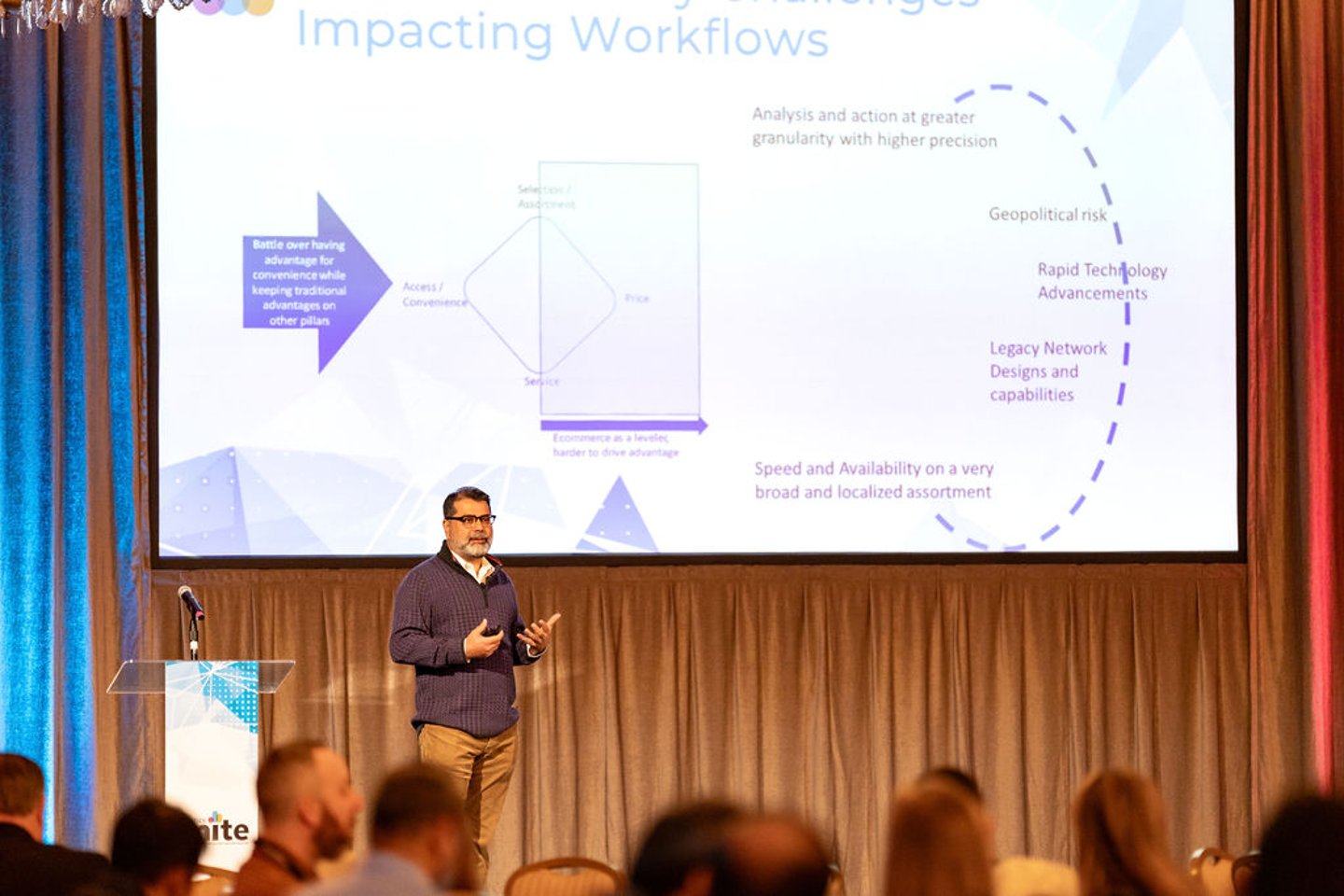Ease and Convenience: Amazon’s Supply Chain Director Talks Building in Automation With Legacy Systems
There are two elements that consumers crave and that help CPG and retail businesses build a competitive advantage: speed and convenience. Ashish Bharara, supply chain director with Amazon, has seen this across his career, which includes time at companies like Walmart and Advanced Auto Parts.
“For companies with a history, there is a legacy challenge,” said Bharara during the opening presentation of Analytics Unite, held May 1-3 in Chicago. “Speed and convenience — and everyone is asking us to deliver at scale.”
[Stay tuned for continuing coverage of Analytics Unite. In the meantime, view Scenes From Analytics Unite 2024]
As supply chains become more globalized, business models have needed to shift, he said, leading to a transformational paradigm shift, especially for brick-and-mortar retailers, and the emergence of “get things in less than one hour” via delivery or curbside and in-store pickup.
Processes are only becoming more complex, he warned. Inventory needs to be within 100 miles of a customer, and in a world of e-commerce pure-play, it all gets tricky to manage.
Automating processes within supply chain operations becomes essential, he said. The key enablers are increasing access to granular data (both internal and some external), ensuring there is a knowledgeable workforce that can manage this data, and developing algorithms in-house.
“You need a large amount of storage and computes, and you’ll need to watch out as data integrity degrades over time,” said Bharara. “Set up a simulation lab and stay and engaged and have clear guardrails.”
Case Study: Advanced Auto Parts
Bharara shared the success he had building out an automated supply chain at Advanced Auto Parts as an example of an approach that bolstered processes, building on top of a legacy system and bringing in data scientists and product engineers internally to scale efforts.
Advanced Auto Parts:
- 1.5 million parts, 250,000 in network, 8,000 in store
- 5,000 stores, 300 hubs, 40 DCs
- 3-tier placement: DCs, superhubs, stores
The challenges:
- The company’s supply chain stored half a million parts, but stores could only house 8,000
- A third of the inventory was unpredictable as vehicles within a five-mile radius of a store would change dramatically
- On-prem servers required six weeks to do the inventory math for 250 stores
- Inability to react in real-time due to manual processes, resulting in low availability and low inventory
The solutions:
1. Started with basic building blocks: data acquisition and infrastructure
2. Built integrated workflows and gained credibility by gathering sub-level insights like sales, lookup, inventory availability
3. Introduced predictive analytics, splitting algorithms to focus on forecasting wait times, demand, etc.
4. Brought in key influencers
5. Built in guardrails: If a part didn’t sell for six months, it was pulled
6. Increased inventory coverage for stores (for example, guaranteeing that locations had brake parts for 98% of the vehicles in that market)







